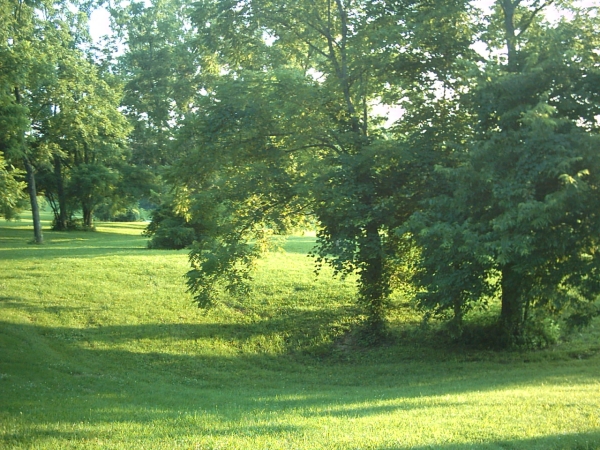Limestone, with its high calcium carbonate content, is easily
dissolved in the acids produced by organic materials. About 10% of
the earth's land (and 15% of the United States') surface consists
of soluble limestone, which can be easily dissolved by the weak
solution of carbonic acid found in underground water.

When limestone interacts with underground water, the water
dissolves the limestone to form karst topography - an amalgamation
of caves, underground channels, and a rough and bumpy ground
surface. Karst topography is named for the Kras plateau region of
eastern Italy and western Slovenia (Kras is Karst in German for
"barren land"). The underground water of karst topography carves
our impressive channels and caves that are susceptible to collapse
from the surface. When enough limestone is eroded from underground,
a sinkhole (also called a doline) may develop. Sinkholes are
depressions that form when a portion of the lithosphere below is
eroded away. Sinkholes can range in size from a few feet or meters
to over 100 meters (300 feet) deep. They've been known to "swallow"
cars, homes, businesses, and other structures. Sinkholes are common
in Florida where they're often caused by the loss of groundwater
from pumping. A sinkhole can even collapse through the roof of an
underground cavern and form what's known as a collapse sinkhole,
which can become a portal into a deep underground cavern. While
there are caverns located around the world, not all have been
explored. Many still elude spelunkers as there is no opening to the
cave from the earth's surface. Inside karst caves, one might find a
wide range of speleothems - structures created by the deposition of
slowly dripping calcium carbonate solutions. Dripstones provide the
point where slowly dripping water turns into stalactites (those
structures which hang from the ceilings of caverns), over thousands
of years which drip onto the ground, slowly forming stalagmites.
When stalactites and stalagmites meet, they forum cohesive columns
of rock. Tourists flock to caverns where beautiful displays of
stalactites, stalagmites, columns, and other stunning images of
karst topography can be seen. Karst topography forms the world's
longest cave system - the Mammoth Cave system of Kentucky is over
350 miles (560 km) long.
The cache CZ is at one of the pictures above.
In order to log this cache, email me the answers to the
following questions.
1. Approximately how many depressions or sinkholes are there in
the area surrounding the GZ within 1/4 of a mile?
2. In most of the sinkholes in the area,what is being used to
slow the process?
Also attach a photo if you would like, of the sinkhole at the
GZ.